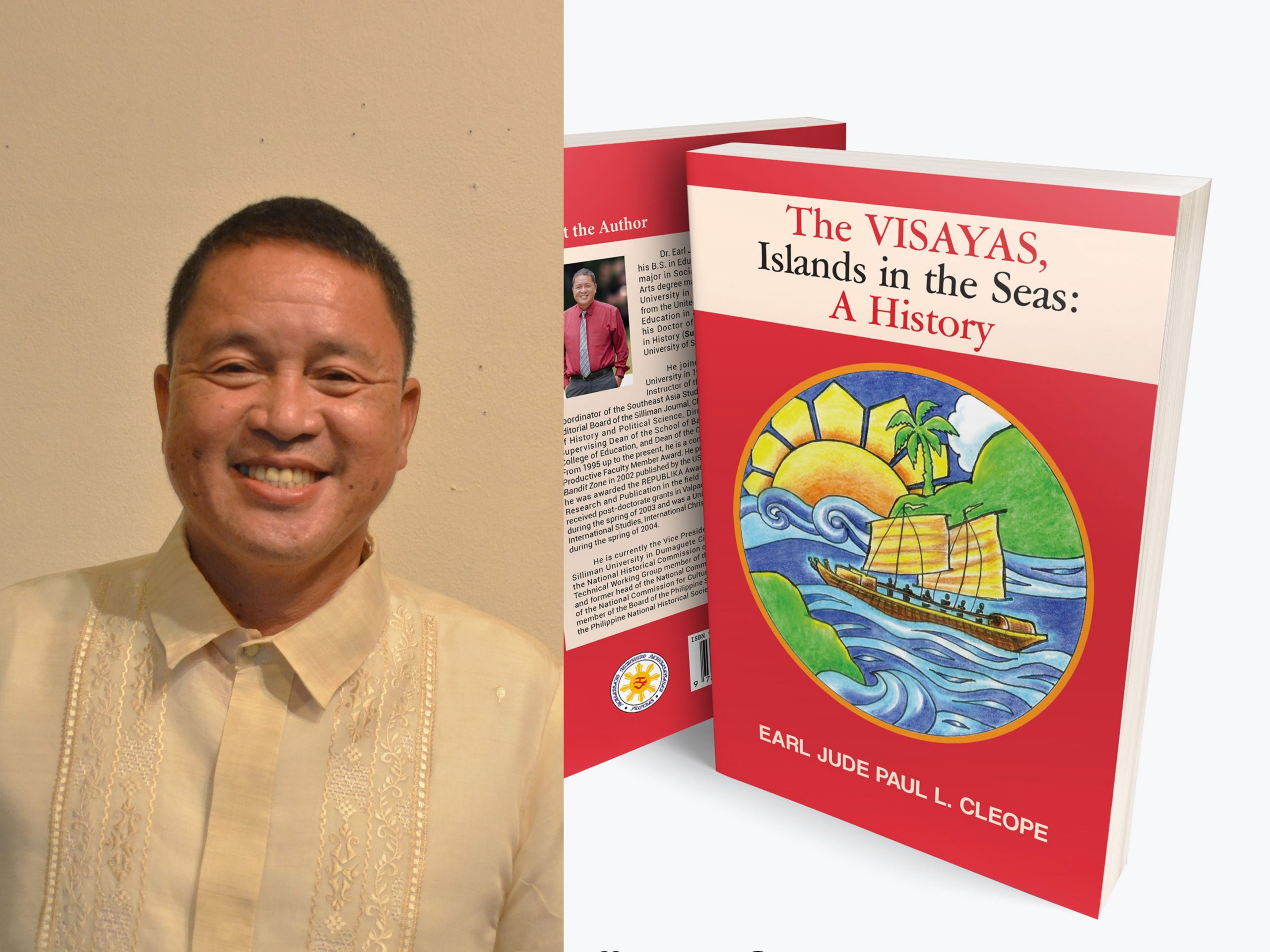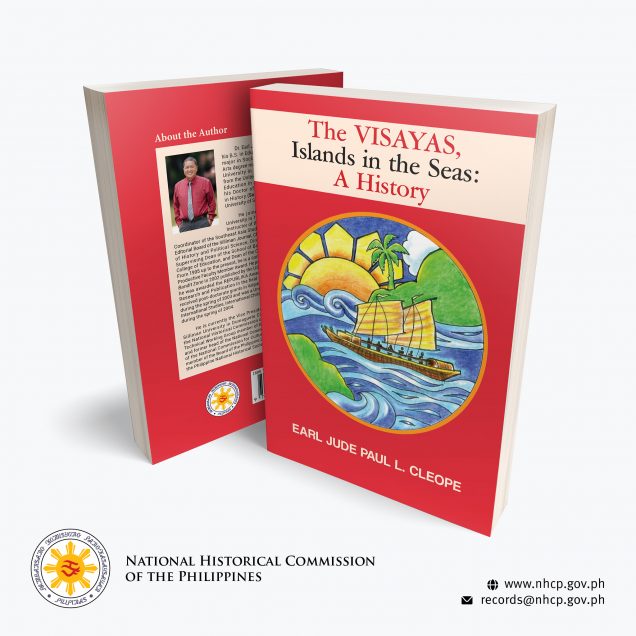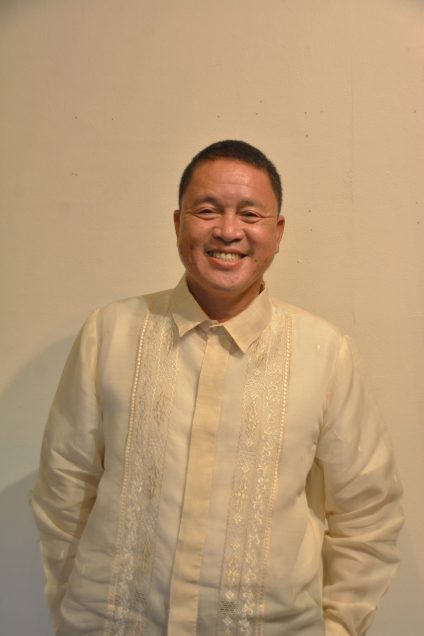
SU VP’s book on Visayas’ maritime history gets published by NHCP

“The Visayas, Islands in the Sea: A History” by Dr. Earl Jude Paul L. Cleope, Silliman University (SU) vice president for academic affairs and National Historical Commission of the Philippines (NHCP) commissioner. (Photo from the NHCP)
Dr. Earl Jude Paul L. Cleope, Silliman University (SU) vice president for academic affairs, tells the history of the Visayas using the maritime perspective in his book, “The Visayas, Islands in the Sea: A History,” which has recently been published by the National Historical Commission of the Philippines (NHCP).
The NHCP informed Cleope last September 3, 2023 that copies of his book have been printed and will be for sale, priced at P250 per copy, at the NHCP booth at the Manila International Book Fair from September 14-17, 2023 at SMX Convention Convention Center.
Dr. Emmanuel Franco Calairo, NHCP chair, congratulated Cleope on his book and said, “Dr. Cleope’s book emphasized maritime history, tracing the interactions of people and their activity at sea, and connecting the history of the different islands in the Visayas.”

Dr. Earl Jude Paul L. Cleope, Silliman University (SU) vice president for academic affairs and National Historical Commission of the Philippines (NHCP) commissioner.
Role of the sea
“This study of history is framed on the role of the sea in the historical development of the Visayas region,” said Cleope, who is also a commissioner of the NHCP.
In the introduction of his book, Cleope said he spent 15 years examining the role of the bodies of water surrounding the Visayas islands as “part of the historical discourse.” With this focus on the seas and maritime activities of people in the Visayas, the book describes the history of the Visayas islands as major historical events in Philippine history unfold.
“This book dealt with voluminous materials dealing with Visayan local history that was synthesized to provide a history of the region with the ultimate goal of contributing to constructing a complete history of the nation,” wrote Cleope.
Cleope also said the book emphasizes the maritime parts of the Visayas that shaped the region’s identity and cultural heritage and attempts to “fill in the first gaps” needed to develop the region’s history.
Regional history
Cleope said in his book that he aimed to offer a “new framework” for writing a “total, national history” that develops the entire history of a region using a multi-interdisciplinary approach. This “new historicist perspective,” he said, was used to explain the history of the Visayas because he “feels that regional history must be developed first” before the drafting of a national history.
Dr. Bernardita Reyes Churchill, Philippine National Historical Society (PNHS) president who wrote the foreword for Cleope’s book, said the book “blazed a trail in local/regional history.”
“The ultimate goal of [the book] was to synthesize the history of the Visayas, collating the various historical studies thus far, constructing a regional history of the Visayas that would find resonance in the historiography of the other regions in the Philippines,” wrote Churchill.
Churchill also said the book “maintains that the Visayas cannot be studied in complete isolation and must be set in the context of national history,” which shares the same goal of PNHS as the oldest professional organization of historians and practitioners of history in the Philippines.
“There is a whole history of the Visayas—land and people—awaiting the attention of historians and other social scientists,” she said.
Multi-interdisciplinary approach
In the foreword, Churchill said Cleope used a multi-interdisciplinary technique to “illustrate parallelisms, similarities, and differences in the historical and cultural development among the Visayan islands.”
Churchill noted how Cleope used “voluminous materials” on Visayan regional/local history to write the book, including texts and discourses of archival and published records, first-hand knowledge from folklore and oral traditions, etymologies, literary and linguistic studies, travel accounts, and oral history.
“This has almost been a lifetime work that the author has dedicated to Visayan historiography,” she added.
Moreover, Cleope said in the book’s foreword that the book is a collection of his research papers which he has presented at national conferences of the PNHS. The book’s first chapter on the maritime history of the Visayas is from a paper he presented in 2002.
Other chapters in the book are about the following topics: the Visayan Islands before the arrival of Europeans; early revolts and reactions to Spanish colonization; Visayan maritime raiding; Visayan-Tagalog tension in the Philippine Revolution; Japanese occupation in the Visayas; the non-combatants in the Visayas Islands, in the areas that were labeled by the Japanese as “Bandit Zones”; and the historical evolution of Visayan ports.


